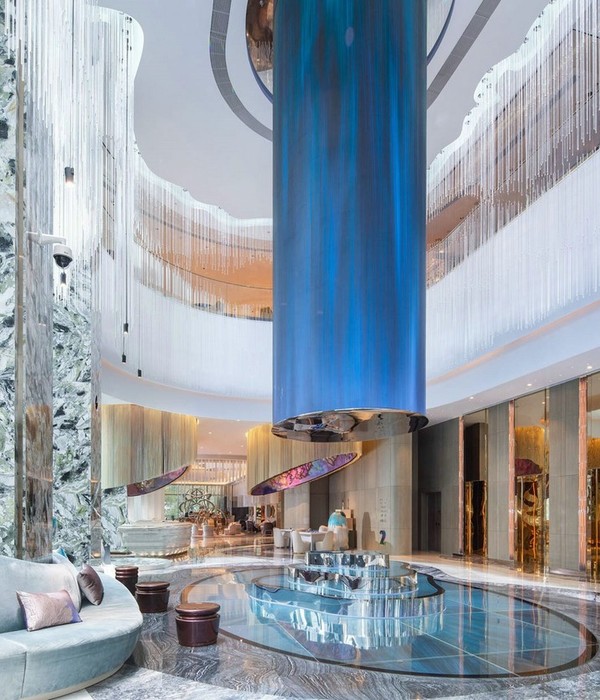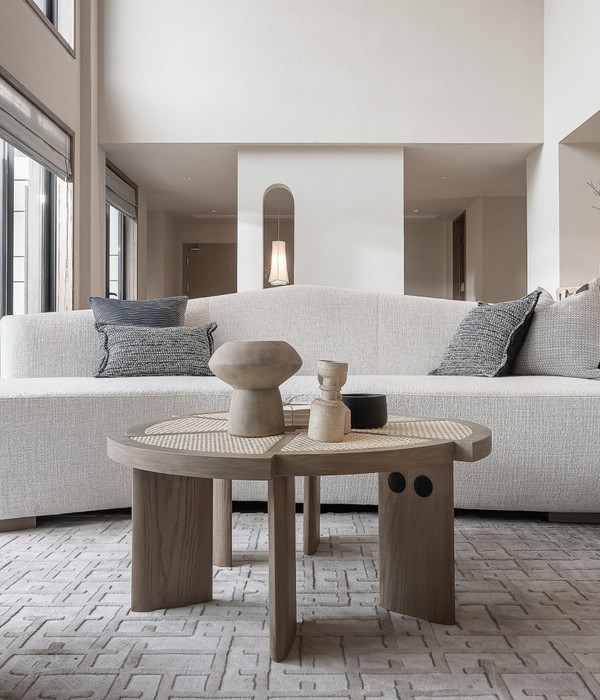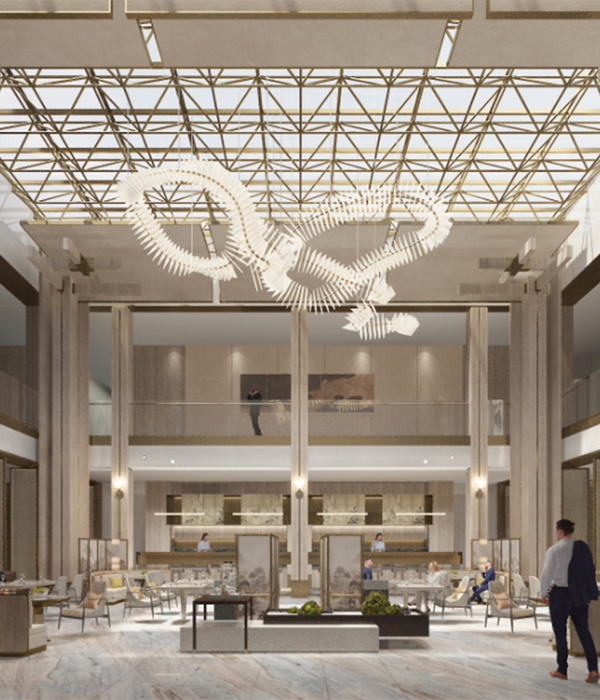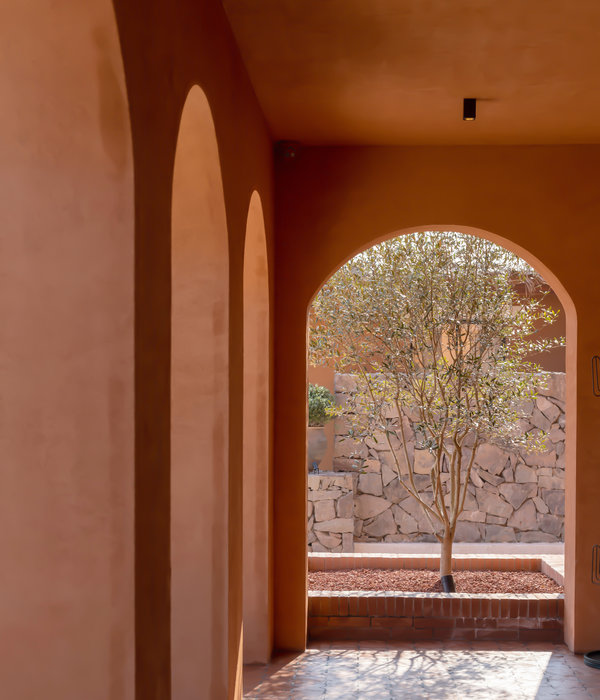Stable COVID-19 rates and a scattered format convinced the Designart organisers to go ahead with this year’s event, placing Tokyo in the creative spotlight. Dozens of exhibitions and product launches (many originally scheduled for Milan) took place across 70 sites — here we round up some of the highlights
Daisy Balloon at sequence MIYASHITA PARK. Image by Nacasa & Partners
This year’s edition of Designart Tokyo, an annual event celebrating the best of all things design and art, has perhaps never been more welcome. The event — which ran from late October to early November, with around 150 exhibitors at 70 sites across the capital — was a much-needed breath of fresh air at a time when the global design calendar has been so affected by the pandemic.
Organisers decided to forge ahead, given Japan’s relatively stable COVID-19 figures, though with a downsized format, decentralised layout and a focus on handwashing, temperature checks and facemasks.
The festival was recalibrated into a more hybrid structure, with an unprecedented focus on digital content alongside physical locations — with 3D virtual exhibitions, online talks and daily Facebook Lives making the event accessible to a more global audience. And an added bonus was that Tokyo was treated to a string of launches that would otherwise have been showcased at (cancelled) international events like Milan’s Salone.
A creative shift was also palpable, says Designart co-founder and creative director Akio Aoki, of Miru Design, from an emerging focus on pandemic-era functionality (one hub was devoted to home office design, for example) to a deeper appreciation of the ‘emotional’ elements of design.
Highlighting this year’s theme, Power to the Creatives, he says, ‘The most important motivation for people in this climate is the power of creating — it helps us move forward. There are so many things going on in the world, I think it’s made people focus more on the emotional value of design, and things that move us and inspire us.’
Here we round up some of the highlights, both official and unofficial, from this year’s festival programme.
Paper Skin by Hiroki Furukawa. Image by Nacasa & Partners
Paper Skin by Hiroki Furukawa at BUNKITSU bookstore
At first glance, it’s hard to imagine that the organically soft, rippling structures could be made of paper, but 29-year-old Hiroki Furukawa’s Paper Skin is precisely that. Fusing colour, craftsmanship and technology, his small solo exhibition showcased visually striking wave-like stacks of fine paper threaded together in shapes ranging from the abstract to an antique-like Japanese jacket. ‘I think it’s necessary to think about creating works that can only be born in this current difficult situation,’ Furukawa says.
Takuro Tamura and Daisy Balloon at sequence MIYASHITA PARK. Image by Nacasa & Partners
sequence MIYASHITA PARK
One key social hub was new hotel sequence MIYASHITA PARK in Shibuya, created by a medley of top Japanese talent including Makoto Tanijiri of Suppose Design Office, Teruhiro Yanagihara, and Masaki Kato of Puddle. In addition to several events, including a PechaKucha in the 18th-floor bar, Designart exhibits at sequence included a feather-like installation of white balloons in Daisy Balloon’s Joining, and Lovers, a sculpture of intertwined orange roadside mirrors by Takuro Tamura.
On Stone and Sky at Designart Gallery at Omotesando Hills. Image by Nacasa & Partners
nendo’s collection for Stellar Works at Designart Gallery at Omotesando Hills. Image by Nacasa & Partners
Designart Gallery at Omotesando Hills
At the Designart Gallery at Omotesando Hills, Hong Kong-based design duo Batten and Kamp made their Tokyo debut with On Stone and Sky, a sculptural installation of minimal lines, metals and boulders (including their Steel and Stone Chair, a single sheet of angular metal with a boulder at the base). Daniel Kamp describes the concept as ‘disconnecting from the digital and reconnecting with the real.’
Also launched was a collaboration between Stellar Works and nendo, initially scheduled for Salone del Mobile in Milan, with perfectly tilted, tubular Kite armchairs, three-legged Blend stools and the multifunctional Frame, an L-shape steel frame system.
kasane at g GIFT AND LIFESTYLE. Image by Nacasa & Partners
kasane at g GIFT AND LIFESTYLE
Sustainable wall covering producer kasane showcased a modern take on the centuries-old Japanese temple roofing technique hiwadabuki, which involves layering hinoki cypress wood bark. The temple roofing company Hiwadaya and Parisian artist Manuela Paul-Cavallier created Poésie en quatuor d’automne – expanses of small squares of gold-flecked orange bark that highlights new possibilities in contemporary crafted walls.
Art & Technology at Artek Tokyo. Image by Akihide Mishima
Ronan & Erwan Bouroullec at Artek Tokyo and Cibone / HAY
The Japan launch of the French design duo’s new Rope chair and Tupla wall hook was celebrated with installations at Artek Tokyo and, just around the corner, Cibone and HAY in Omotesando Gyre. Arranged by design studio Flooat, Inc., the installations — titled Art & Technology — artfully highlighted the lightweight minimalism of the new chair and hook, alongside a curated range of Bouroullec works, from iittala vases to Kvadrat textiles.
Denis Guidone X ARITA at Jasmac Aoyama. Image by Artia Photography
REBOOT at Jasmac Aoyama
Denis Guidone X ARITA, at Jasmac Aoyama (an Aldo Rossi-designed haven of pink walls and elegant curves), consisted of a minimal, still life-like arrangement of sketches, moulds and tools from the Italian designer’s residency at Japan’s porcelain hub, Arita. ‘These items are rarely accessible to the public,’ Guidone explains. ‘My intention is to show the hidden parts that reveal the essence of creativity and design.’ Other highlights at Jasmac included YOY’s flat spinning bulbs and scroll-like lights, and Junichiro Oshima colour-block wood trays as part of group exhibition aida.
ENCOUNTERS at ANB Tokyo. Image by Shintaro Yamanaka
ANB Tokyo
Recently opened arts hub ANB Tokyo in Roppongi hosted ENCOUNTERS, an exhibition of contemporary photographic works spanning four floors, each taken over by a different curator. Highlights in the space included Taisuke Koyama’s abstract rainbow wave prints and Yurie Nagashima’s monochrome self-portraits.
knit all together at Kashiyama Daikanyama. Image by Nacasa & Partners
knit all together at Kashiyama Daikanyama
A circle of 100-plus knitwear items in rainbow shades took centre stage in knit all together by designer Motohiro Tanji and photographer Yuji Watanabe. The items were knitted by families at home during Japan’s state of emergency this year. Also in the nendo-designed Kashiyama was Philippe Baudelocque’s minutely detailed monochrome chalk etchings alongside exquisitely printed Danish art publication Plethora Magazine.
Max Lamb for Tajimi Custom Tiles. Image by Kenta Hasegawa
Tajimi Custom Tiles launch
A number of events were timed to coincide with Designart, and an unofficial highlight was the global launch exhibition of Tajimi Custom Tiles (initially scheduled for Milan). The launch comprised experimental installations by British designer Max Lamb, his specially developed modular, three-dimensional tiles all smooth curves and rich natural shades, and South Korea’s Kwangho Lee, who designed minimal, looping rope-like motifs in serene shades of white and terracotta.
Text / Danielle Demetriou
{{item.text_origin}}












